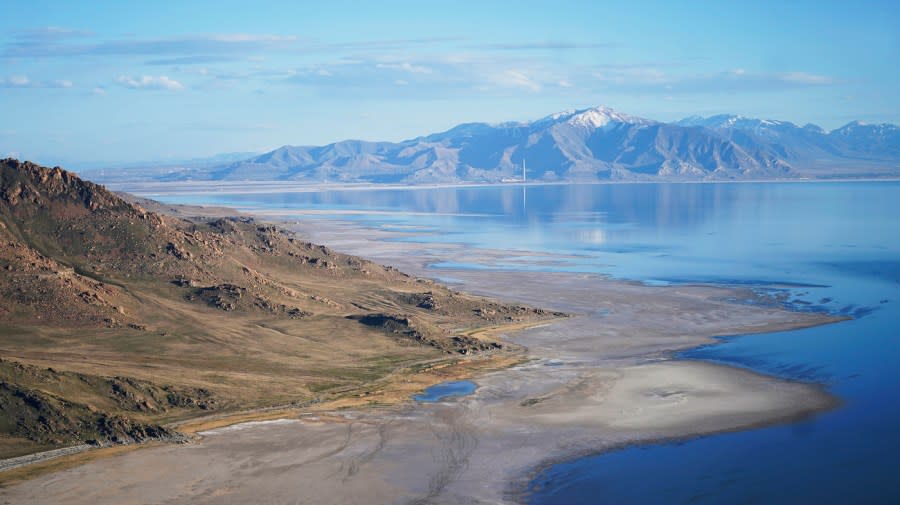Restoring Great Salt Lake could have ecological and environmental justice benefits: Study

Reinvigorating the dwindling Great Salt Lake could bring benefits to regional ecology and help bridge the environmental justice gaps that impact area residents, a new study has found.
As inland seas dry up worldwide, they emit polluted dust into surrounding communities, the study authors explained. Near the Great Salt Lake, exposure to those contaminants is highest among Pacific Islanders and Hispanic populations and lowest among white people, the researchers noted.
Restoring the lake would therefore benefit everyone in its vicinity by decreasing dust exposure, while also reducing disparities among different racial, ethnic and socioeconomic groups, according to the study, published Friday in One Earth.
“People here in Utah are concerned about the lake for a variety of reasons—the ski industry, the brine shrimp, the migratory birds, recreation,” first author Sara Grineski, a sociologist professor at the University of Utah, said in a statement.
“This study adds environmental justice and the equity implications of the drying lake to the conversation,” Grineski added.
The Great Salt Lake has been on a continuous drying trajectory since the mid-1980s — exposing its dry lake bed to wind and atmospheric weather conditions, the researchers noted.
Meanwhile, they explained, past studies have demonstrated that dust emissions from drying salt lakes generate fine particulate matter (PM 2.5), which has become a public health threat worldwide.
Grineski and her colleagues therefore sought to determine whether some individuals suffer the consequences disproportionately.
To do so, they used a model to explore how dust pollution would change if the lake became even dryer or if water levels climbed to a healthy level. Specifically, they simulated how much dust would be generated by erosion under various conditions — and how wind would distribute the resultant dust across three nearby counties.
The researchers then combined their model’s results with demographic data from the U.S. Census to determine whether dust exposure severity has any connection to racial and ethnic groups or socioeconomic status.
Ultimately, Grineski and the team found that at the lake’s current level, people in the Great Salt Valley are exposed to 26 micrograms per cubic meter of PM 2.5 dust on average.
Although that figure is much higher than the World Health Organization’s threshold of 15 micrograms per cubic meter, it is lower than the U.S. threshold of 35 micrograms per cubic meter.
Should the lake dry up entirely, average exposure to PM 2.5 during dust storms would soar to 32 micrograms per cubic meter, according to the study. Restoring the lake to a healthy level would reduce average exposure to 24 micrograms per cubic meter.
In addition to identifying disproportionate exposure among Pacific Islander and Hispanic populations, the authors also found that individuals who lacked a high school diploma were more likely to be heavily exposed.
The researchers stressed the importance of enacting policy and conservation measures that could help bolster water levels of the lake and accelerate the region’s climate change adaptation and mitigation efforts.
“If we can raise the levels of the lake via some coordinated policy responses, we can reduce our exposure to dust,” Grineski said.
Doing so, she continued, would be “good for everyone’s health, and we can also reduce the disparity between groups.”
Copyright 2024 Nexstar Media, Inc. All rights reserved. This material may not be published, broadcast, rewritten, or redistributed.
For the latest news, weather, sports, and streaming video, head to The Hill.

